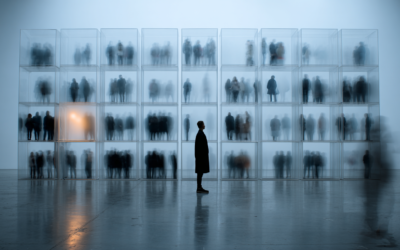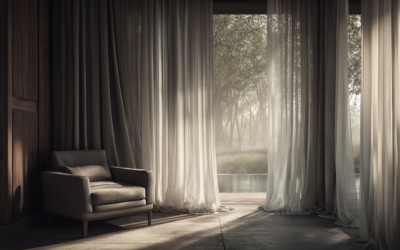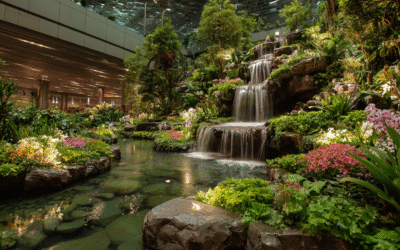TL;DR
Shopping isn’t just about money – it’s about time. In airports, resorts, and luxury retail, our behaviour shifts depending on whether time feels scarce, abundant, distorted, or timeless. Scarcity drives urgency and impulse buys, abundance turns shopping into leisure, distortion warps perception in queues and endless scrolls, and timelessness creates immersive experiences where the clock disappears. The real value of retail lies not in the product alone, but in how it shapes our minutes – wasted, useful, or unforgettable.
Airports as a Time Laboratory
Airports are strange theatres of time. You step through security and suddenly life is suspended. You are neither here nor there, only waiting. Minutes stretch and contract in odd ways. A thirty-minute wait can feel like forever in the wrong queue, and vanish in a boutique where you lose yourself among watches and perfume.
It is in these suspended hours that shopping thrives. The oversized Toblerone, the sunglasses you didn’t need, the fragrance you’ll spritz once and forget. No one enters an airport intending to buy these things. What they are really doing is buying back their time.
In non-essential and luxury retail, this hidden currency is everywhere. Money matters, yes. But it is time – scarce, abundant, distorted, or transcended – that shapes the choice to buy.
Scarcity: When the Clock is Ticking
Time scarcity is one of the most powerful purchase triggers. When the clock is running down, shoppers shift from deliberation to instinct.
Airports make this brutally clear. A traveller with ten minutes before boarding doesn’t weigh options; they grab something familiar and fast. Known brands win because they don’t demand cognitive effort. Even small queues feel intolerable, magnified by the fear of missing the flight. The purchase is not just the item – it is the reassurance of having done something with those minutes.
In luxury retail, scarcity of time takes a different form. High-net-worth clients often have abundant money but scarce hours. Their loyalty is bought with efficiency. Appointment-only showrooms, private lounges, and personal shoppers aren’t just symbols of prestige – they collapse the time cost of shopping.
Online retail simulates the same pressure. Countdown clocks, “only two left,” and one-day exclusives mimic the airport gate-call. Scarcity of time becomes scarcity of product, and the shopper acts before thinking.
Scarcity strips shopping of leisure. It pushes us toward impulse, toward the familiar, toward the safe choice. But paradoxically, it is also where many of the highest-margin purchases are made.
Abundance: When Time Feels Endless
At the opposite pole is abundance – when time stretches out and shopping becomes a way of inhabiting it.
Long layovers are a classic example. Travellers wander into duty-free not because they need anything, but because browsing fills the vacuum. Boredom becomes curiosity. “I may as well look” softens into “I may as well buy.” Retail here is a diversion, a way of making idle hours feel useful.
Luxury hotels and resorts extend this logic further. In these spaces, time is curated to feel generous. Shopping is framed not as an interruption but as part of the holiday itself. A guest can linger over jewellery, art, or fashion without the usual friction of schedules. The purchase becomes a marker of memory – something that carries the atmosphere of leisure home.
Online, abundance takes the form of digital wandering. A Sunday afternoon spent scrolling through collections or Pinterest boards may not result in an immediate sale, but the act of browsing itself is rewarding. Time is consumed in the pleasure of imagining, comparing, and anticipating.
If scarcity is about compression, abundance is about expansion. In abundance, retail stops being transaction and starts being ritual.
Distortion: When Time Warps
Sometimes time is neither short nor long, but strangely elastic. It warps under the influence of environment, uncertainty, or design.
Airports specialise in this distortion. Departure boards flicker, announcements echo, and no one is quite sure when boarding will begin. Forty-five minutes of “waiting” feels like fifteen minutes of calm followed by thirty minutes of anxiety. In this compressed perception, even modest queues seem unbearable. Retailers exploit the gap – duty-free snake-lines turn dead time into browsing time, converting irritation into purchase opportunity.
Luxury boutiques often engineer the opposite effect: elongation. No windows, no clocks, controlled lighting. The outside world disappears. Time slows. What should be a quick visit stretches into an hour of exploration, storytelling, and sensory immersion.
Resorts tilt again toward elongation. Shops are woven into leisure – the gallery beside the spa, the boutique by the pool. Guests drift through, barely noticing the passage of time, as if shopping is simply another activity in the slow rhythm of the day.
Online platforms weaponise distortion algorithmically. The infinite scroll makes half an hour vanish unnoticed. What feels like “just five minutes” on Instagram Shop is often forty-five. Here, time isn’t stretched or compressed – it’s quietly stolen.
Distortion is the sleight of hand of retail. It doesn’t give more time or take it away. It changes how time feels, and in that altered perception, choices shift.
Timelessness: When the Clock Disappears
Beyond scarcity, abundance, and distortion lies a rarer state: timelessness. This is when shopping induces such absorption that the awareness of time falls away entirely.
Psychologists call it flow. In retail, it’s cultivated with precision. A softly lit fitting room, a glass of champagne offered at just the right moment, a sales associate who anticipates needs before they’re spoken – together, these elements suspend the shopper in a world where minutes no longer exist. The purchase becomes not just a product but a crystallised moment, wrapped in atmosphere.
Airports rarely manage timelessness – the clock is too loud, too visible. Yet secluded luxury boutiques or spa-retail hybrids sometimes create pockets of escape, shielding travellers from the stress of departure calls.
Resorts achieve it naturally. A guest wandering into a jewellery store at dusk, barefoot from the beach, absorbed in trying on a piece that catches the light – they are already outside ordinary time. The item becomes part of the dream of the holiday itself, not just an acquisition.
Even online, timelessness is possible. We fall into digital trances, comparing designs, colours, or flights of desire, losing track of hours. The difference is that digital timelessness is often hollow: engineered for engagement, not meaning. Where physical timelessness can enrich memory, online often leaves only the faint aftertaste of lost hours.
Timelessness is the pinnacle of retail theatre. It transforms shopping from transaction into experience, from activity into story. It is not just buying – it is stepping briefly into another dimension.
The Value of Time
Scarcity, abundance, distortion, timelessness – these are the hidden architectures of retail. They shape not just what we buy, but how those purchases feel, and how we remember them.
In scarcity, shopping is compressed to instinct and urgency.
In abundance, it expands into ritual and leisure.
In distortion, it warps into something less predictable, sometimes stressful, sometimes enchanting.
And in timelessness, it transcends the clock altogether, becoming experience itself.
We like to say time is money, but that flattens the truth. In airports, resorts, boutiques, and online storefronts, time is not merely spent – it is designed, manipulated, stretched, and sold back to us.
The real question is not whether a product is worth its price. It is whether the way we spent our minutes made them feel wasted, useful, or unforgettable.
Perhaps the most powerful shopping experience is not the one that offers the best deal, nor even the most beautiful product, but the one that makes us forget, for a moment, that the clock was ticking at all.



